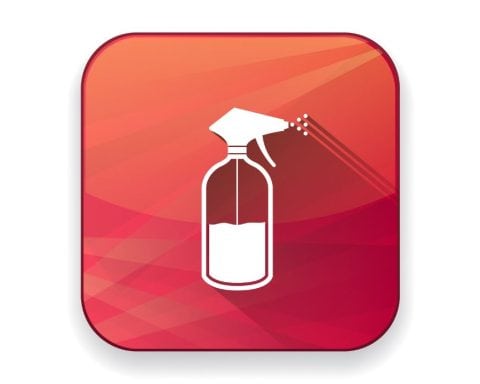Over 40 million girls are falling through the cracks of the education system, and the world's leaders are finally paying attention.
A week before the G20, a conference for the world's young women took place in downtown Toronto. The G(irls) 20 helped to bring together women representing each of the countries of the Group of 20, plus Malawi, to discuss obstacles facing women across the globe. The women discussed attitudes surrounding menstruation in the developing world, a subject that is now on the radar of many aid agencies and NGOs.
Belinda Stronach, the executive vice-chairman of Magna Corporation and an MP from 2004 to 2008, sponsored the G(irls) 20 through her Belinda Stronach Foundation. “When you give girls a chance to get an education, they can earn more money,” Stronach told the Toronto Star in October. Citing former U.S. Secretary of State Madeleine Albright, she added, “They reinvest 90 per cent of their income back into their families and their communities, versus 30 to 40 per cent of their male counterparts.” However, organizations such as the World Bank and Oxfam believe prevailing attitudes towards menstruation have prevented women from playing a more active role in their communities. In 2005 the World Bank estimated a girl could miss up to 20 per cent of her school year if she doesn’t attend during menstruation.
Studies suggest menstruation is taboo in some cultures, preventing learning and open discussion about the subject. These taboos often require menstruating women to refrain from interacting with their family and community, and from participating in religious ceremonies.
A study by the Forum of African Women Educationalists of Uganda in 2004 found Uganda's rural population had a poor understanding of menstruation, but men stood out in particular. When asked about menstruation, girls described a culture of silence.
When girls do receive information about menstruation, it is often from unreliable sources. The African Journal of Reproductive Health surveyed 550 secondary school girls in south eastern Nigeria, and found over 90 per cent received information about menstruation from mothers, aunts, or friends. Only 3.3 per cent had discussed the subject with a health professional.
The education system is not much better. Only 0.4 per cent reported discussing the subject with a teacher. This may be due to the fact that female teachers represented only 30 per cent of primary school teachers in West Africa in 2009. In this patriarchal system, female teachers may be afraid or unable to educate children on puberty and bodily functions such as menstruation. A paper published in 2009 by international NGO Wateraid reported a teacher from Lalitpur, Nepal told a girl, “This topic need not be taught; you can self-study at home.”
Because of this lack of education girls are often stigmatized. In conversations held in 2004 by the Sudan Basic Education Project, one girl explained, “We have to ensure that we are very clean before we get back to school. Otherwise boys will tease us publicly, bully, and say nasty things about us. It is so embarrassing that we avoid the embarrassment by staying away from school.”
Working women also suffer similar problems. A study published by the Institute for the Study of Labour in February 2010 found women in China were 10 per cent less likely to participate in wage work if their place of employment lacked access to a clean source of water than if there was a clean source. The authors concluded that this is due to the need to wash used menstrual rags, maintain personal hygiene, and avoid infection.
This lack of facilities has been observed in many developing nations. Wateraid noted in Bangladesh public facilities for women were often non-existent. As a result women rarely washed their rags in clean water and hid them in dark places, which encourages the growth of mould. This has led to vaginal infections and cuts that are hidden and dealt with in silence.
Elizabeth Scharpf, a graduate from Harvard Business School and founder of Sustainable Health Enterprises (SHE), discovered how menstruation affected women lives while working for the World Bank in Mozambique. “This wasn't just one problem that existed as an anomaly, but actually a global issue,” she says. “[It has] significant costs to education, health, and productivity.” For instance, SHE estimates the lack of menstrual pads could lower Rwanda’s GDP by up to $115 million U.S.
Scharpf explains a pack of ten brand name disposable pads in Rwanda costs approximately $2.25 U.S., while the average monthly salary is around $34 U.S. In other words, a single pack of menstrual pads, not enough to last a period, consumes about 6 per cent of a Rwandan family's monthly budget. In Nepal, this figure can go up to 10 per cent. This can be a difficult expenditure to justify when many in the household may not understand menstruation.
SHE partnered with North Carolina State University and Massachusetts Institute of Technology to created a low-cost menstrual pad using banana fibres. The pads, for which SHE won the 2010 Curry Stone Design Prize for innovative design, are safer for the environment and less expensive because they are made with locally available, natural materials. SHE’s goal is to empower women by giving them an opportunity to own and operate businesses selling these pads via microfinance loans, training, and partnering with existing local women’s networks. SHE intends to begin manufacturing the pads in Rwanda before the end of 2010.
Scharpf has also created the SHE28 campaign, an advocacy campaign that has helped 5,000 community health workers provide generic menstrual pads at a fraction of the cost, secured an investment of $35,000 from the government of Rwanda to procure pads for the poorest girls, and is working with developing countries to integrate sexual education into their curriculum, and eliminate taxes on pads.
SHE is not the only organization seeing the need to provide women with access to menstrual pads. The Clinton Global Initiative and Proctor and Gamble have pledged $2.8 and $5 million U.S. respectively to help deliver more affordable pads. And Canada has pledged $1.1 billion CDN for maternal and child health initiatives which will include “sanitation” initiatives.
But a new study published in March 2010 by the University of Michigan, the University of Chicago, and Harvard University cautions organizations against just throwing money at the problem. The authors, Emily Oster and Rebecca Thornton, tried to capture the effect providing menstrual cups to school aged girls would have on attendance. Using a randomized sample of 192 students in Nepal they found girls missed only 0.4 days in 180 due to their period regardless of whether they had access to menstrual cups. The study was taken in one of the more developed regions of Nepal but the authors believe the results could be generalized to other developing countries.
Instead, The Center for Global Development, a policy think tank, believes, “Donors must focus (...) on the social barriers in the transition between primary and secondary levels, typically affecting girls ages 10–14.” They found parents were less likely to invest in educating daughters because girls leave home upon marriage and are therefore perceived as an empty investment.
It may be impossible to single out menstruation as the main reason women have been left behind in the developing world. Nicholas Kristof, author of “Half the Sky: Turning Oppression into Opportunity for Women Worldwide”, wrote, “There's no silver bullet to get more girls in school,” but added, “[providing menstrual pads] may be one of the silver buckshot.” If nothing else, menstrual pads promise to give women in developing countries more confidence to take the opportunities that come their way, regardless of which days in the month those opportunities fall.





